Frederic Servajean
« Ã propos du temps (neheh) dans quelques textes du Moyen Empire »
ENiM 1, 2008, p. 15-28.
 Les mentions du terme neheh sont analysÃĐes dans quelques textes du Moyen Empire. Ce terme y dÃĐsigne le ÂŦ temps Âŧ, en tant que flux ÃĐtroitement liÃĐ Ã lâÃĐternitÃĐ et lâimmuabilitÃĐ djet, ainsi quâà la pratique de la MaÃĒt.
Les mentions du terme neheh sont analysÃĐes dans quelques textes du Moyen Empire. Ce terme y dÃĐsigne le ÂŦ temps Âŧ, en tant que flux ÃĐtroitement liÃĐ Ã lâÃĐternitÃĐ et lâimmuabilitÃĐ djet, ainsi quâà la pratique de la MaÃĒt.
 The mentions of neheh are analyzed in some texts of the Middle Empire. This term appoints the ÂŦ time Âŧ, as stream strictly connected to the eternity and the stability djet, as well as to the practice of Maat.
The mentions of neheh are analyzed in some texts of the Middle Empire. This term appoints the ÂŦ time Âŧ, as stream strictly connected to the eternity and the stability djet, as well as to the practice of Maat.
 Consulter cet article (45326) -
Consulter cet article (45326) -  Télécharger cet article au format pdf (26934)
Télécharger cet article au format pdf (26934)
« Le cycle du ba dans le Rituel de lâEmbaumement P. Boulaq III, 8, 12-8, 16 »
ENiM 2, 2009, p. 9-23.
 Lâanalyse de quelques passages du Rituel de lâEmbaumement (P. Boulaq III) permet de reconstituer le cycle du ba dans un contexte spÃĐcifique de momification et de comprendre la logique des traditions sur lesquelles il se fonde, rÃĐsultant de lâobservation minutieuse de la nature.
Lâanalyse de quelques passages du Rituel de lâEmbaumement (P. Boulaq III) permet de reconstituer le cycle du ba dans un contexte spÃĐcifique de momification et de comprendre la logique des traditions sur lesquelles il se fonde, rÃĐsultant de lâobservation minutieuse de la nature.
 The analysis of some passages of the Embalming Ritual (P. Boulaq III) allows to reconstitute the cycle of the ba in a specific context of mummification and to understand the logic of the traditions on which it is based, resulting from the meticulous observation of the nature.
The analysis of some passages of the Embalming Ritual (P. Boulaq III) allows to reconstitute the cycle of the ba in a specific context of mummification and to understand the logic of the traditions on which it is based, resulting from the meticulous observation of the nature.
 Consulter cet article (66594) -
Consulter cet article (66594) -  Télécharger cet article au format pdf (29095)
Télécharger cet article au format pdf (29095)
« LâÂŦ hÃĐritier du temps Âŧ. à propos de lâÃĐpithÃĻte jwʿw nḥḥ »
ENiM 3, 2010, p. 1-21.
 LâÃĐpithÃĻte jwʿw nḥḥ, lâ ÂŦ hÃĐritier du temps Âŧ, renvoie essentiellement à Osiris ou à la divinitÃĐ solaire dans certains de ses aspects. Il sâagit dâune divinitÃĐ qui se rÃĐgÃĐnÃĻre pÃĐriodiquement en dÃĐbutant rÃĐguliÃĻrement un nouveau cycle temporel neheh annuel ou diurne.
LâÃĐpithÃĻte jwʿw nḥḥ, lâ ÂŦ hÃĐritier du temps Âŧ, renvoie essentiellement à Osiris ou à la divinitÃĐ solaire dans certains de ses aspects. Il sâagit dâune divinitÃĐ qui se rÃĐgÃĐnÃĻre pÃĐriodiquement en dÃĐbutant rÃĐguliÃĻrement un nouveau cycle temporel neheh annuel ou diurne.
 The attribute jwʿw nḥḥ, the ÂŦ Heir of time Âŧ, refers essentially to Osiris or to the solar divinity under some of its aspects. It is a divinity who regenerates periodically herself beginning regularly a new temporal cycle neheh annual or diurnal.
The attribute jwʿw nḥḥ, the ÂŦ Heir of time Âŧ, refers essentially to Osiris or to the solar divinity under some of its aspects. It is a divinity who regenerates periodically herself beginning regularly a new temporal cycle neheh annual or diurnal.
 Consulter cet article (42565) -
Consulter cet article (42565) -  Télécharger cet article au format pdf (24903)
Télécharger cet article au format pdf (24903)
« Le conte des Deux FrÃĻres (1). La jeune femme que les chiens nâaimaient pas »
ENiM 4, 2011, p. 1-37.
 Le conte des Deux FrÃĻres a toujours posÃĐ problÃĻme à ses commentateurs. On sait, depuis la publication du P. Jumilhac par J. Vandier, quâil faut le mettre en relation avec les XVIIe et XVIIIe nomes de Haute-Ãgypte. Une analyse tenant compte plus systÃĐmatiquement des dieux, des rites et des interdits mentionnÃĐs dans le P. Jumilhac permet de mieux cerner sa signification.
Le conte des Deux FrÃĻres a toujours posÃĐ problÃĻme à ses commentateurs. On sait, depuis la publication du P. Jumilhac par J. Vandier, quâil faut le mettre en relation avec les XVIIe et XVIIIe nomes de Haute-Ãgypte. Une analyse tenant compte plus systÃĐmatiquement des dieux, des rites et des interdits mentionnÃĐs dans le P. Jumilhac permet de mieux cerner sa signification.
 The tale of Two Brothers always raised problem to his commentators. We know, since the publication of P. Jumilhac by J. Vandier, that it is necessary to put it in connection with the XVIIth and XVIIIth nomes of Upper Egypt. An analysis taking into account more systematically gods, rites and prohibitions mentioned in P. Jumilhac allows to understand better its meaning.
The tale of Two Brothers always raised problem to his commentators. We know, since the publication of P. Jumilhac by J. Vandier, that it is necessary to put it in connection with the XVIIth and XVIIIth nomes of Upper Egypt. An analysis taking into account more systematically gods, rites and prohibitions mentioned in P. Jumilhac allows to understand better its meaning.
 Consulter cet article (43379) -
Consulter cet article (43379) -  Télécharger cet article au format pdf (25777)
Télécharger cet article au format pdf (25777)
« Le conte des Deux FrÃĻres (2). La route de PhÃĐnicie »
ENiM 4, 2011, p. 197-232.
 Le deuxiÃĻme ÃĐpisode du conte des Deux FrÃĻres a lieu en PhÃĐnicie. Cette rÃĐgion est prÃĐsentÃĐe comme une sorte de monde funÃĐraire dans lequel Bata meurt et retourne à la vie. La structure est la mÊme que pour le premier ÃĐpisode.
Le deuxiÃĻme ÃĐpisode du conte des Deux FrÃĻres a lieu en PhÃĐnicie. Cette rÃĐgion est prÃĐsentÃĐe comme une sorte de monde funÃĐraire dans lequel Bata meurt et retourne à la vie. La structure est la mÊme que pour le premier ÃĐpisode.
 The second episode of the Tale of Two Brothers takes place in Phoenicia. This region is presented as a sort of funerary world in which Bata dies and returns to the life. The structure is the same than in the first episode.
The second episode of the Tale of Two Brothers takes place in Phoenicia. This region is presented as a sort of funerary world in which Bata dies and returns to the life. The structure is the same than in the first episode.
 Consulter cet article (39145) -
Consulter cet article (39145) -  Télécharger cet article au format pdf (22865)
Télécharger cet article au format pdf (22865)
« Le conte des Deux FrÃĻres (3). Ã propos de lâexpression kȝ.t tȝḥw.t »
ENiM 5, 2012, p. 103-113.
 Analyse lexicographique du terme tȝḥw.t dans lâexpression kȝ.t tȝḥw.t mentionnÃĐe dans le conte des deux frÃĻres.
Analyse lexicographique du terme tȝḥw.t dans lâexpression kȝ.t tȝḥw.t mentionnÃĐe dans le conte des deux frÃĻres.
 Lexicographical analysis of the word tȝḥw.t in the expression kȝ.t tȝḥw.t mentioned in the Tale of Two Brothers.
Lexicographical analysis of the word tȝḥw.t in the expression kȝ.t tȝḥw.t mentioned in the Tale of Two Brothers.
 Consulter cet article (35900) -
Consulter cet article (35900) -  Télécharger cet article au format pdf (22705)
Télécharger cet article au format pdf (22705)
« Le ciel de SinouhÃĐ et lâapaisement de SÃĐsostris »
ENiM 6, 2013, p. 79-91.
 Analyse dâun thÃĻme littÃĐraire â le ciel de SinouhÃĐ â, thÃĐmatisÃĐ Ã plusieurs endroits du conte de SinouhÃĐ.
Analyse dâun thÃĻme littÃĐraire â le ciel de SinouhÃĐ â, thÃĐmatisÃĐ Ã plusieurs endroits du conte de SinouhÃĐ.
 Analysis of a literary theme â the sky of Sinuhe â, thematized in several places of the tale of Sinuhe.
Analysis of a literary theme â the sky of Sinuhe â, thematized in several places of the tale of Sinuhe.
 Consulter cet article (36046) -
Consulter cet article (36046) -  Télécharger cet article au format pdf (22256)
Télécharger cet article au format pdf (22256)
« Les dimensions des navires dâHatchepsout et autres remarques sur la navigation en mer Rouge »
ENiM 9, 2016, p. 179-226.
 Les vaisseaux de la reine Hatchepsout, et leurs dimensions, et la navigation en mer Rouge vers le pays de Pount.
Les vaisseaux de la reine Hatchepsout, et leurs dimensions, et la navigation en mer Rouge vers le pays de Pount.
 The vessels of queen Hatshepsut, and their dimensions, and navigation in the Red Sea towards the country of Pount.
The vessels of queen Hatshepsut, and their dimensions, and navigation in the Red Sea towards the country of Pount.
 Consulter cet article (35861) -
Consulter cet article (35861) -  Télécharger cet article au format pdf (21154)
Télécharger cet article au format pdf (21154)
« Les radeaux de Pount »
ENiM 10, 2017, p. 103-115.
 Sur lâune des parois de la tombe thÃĐbaine 143, on peut voir la figuration de deux radeaux, en relation avec le retour dâune expÃĐdition du pays de Pount. Ces radeaux ont souvent ÃĐtÃĐ interprÃĐtÃĐs comme des embarcations pountites. Les traditions se rapportant à la mer Rouge font de celle-ci le lieu oÃđ furent inventÃĐes ces embracations et leur existence y est effectivement attestÃĐe jusquâà trÃĻs rÃĐcemment, notamment dans le sud de cette mer. Si cette figuration est incontestablement le plus ancien tÃĐmoignage de lâexistence de ces radeaux, ces derniers nâont pas en revanche atteint lâÃgypte en naviguant mais chargÃĐs sur les navires ÃĐgyptiens revenant de Pount.
Sur lâune des parois de la tombe thÃĐbaine 143, on peut voir la figuration de deux radeaux, en relation avec le retour dâune expÃĐdition du pays de Pount. Ces radeaux ont souvent ÃĐtÃĐ interprÃĐtÃĐs comme des embarcations pountites. Les traditions se rapportant à la mer Rouge font de celle-ci le lieu oÃđ furent inventÃĐes ces embracations et leur existence y est effectivement attestÃĐe jusquâà trÃĻs rÃĐcemment, notamment dans le sud de cette mer. Si cette figuration est incontestablement le plus ancien tÃĐmoignage de lâexistence de ces radeaux, ces derniers nâont pas en revanche atteint lâÃgypte en naviguant mais chargÃĐs sur les navires ÃĐgyptiens revenant de Pount.
 On one of the walls of the Theban tomb 143, we can see the representation of two rafts, in connection with the return of an expedition from the land of Punt. These rafts have often been interpreted as puntites. Traditions relating to the Red Sea make it the place where these boats were invented and their existence is actually attested there until very recently, especially in the south of this sea. If this figuration is undoubtedly the oldest testimony of the existence of these rafts, they did not however reach Egypt by sailing but were loaded on the Egyptian ships returning from Punt.
On one of the walls of the Theban tomb 143, we can see the representation of two rafts, in connection with the return of an expedition from the land of Punt. These rafts have often been interpreted as puntites. Traditions relating to the Red Sea make it the place where these boats were invented and their existence is actually attested there until very recently, especially in the south of this sea. If this figuration is undoubtedly the oldest testimony of the existence of these rafts, they did not however reach Egypt by sailing but were loaded on the Egyptian ships returning from Punt.
 Consulter cet article (32472) -
Consulter cet article (32472) -  Télécharger cet article au format pdf (19950)
Télécharger cet article au format pdf (19950)
« Ã propos de 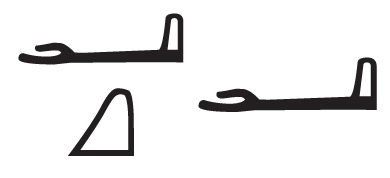 , ʿqʿ, âserrerâ »
, ʿqʿ, âserrerâ »
ENiM 11, 2018, p. 225-229.
 Le mot ʿqʿ, qui accompagne les figurations de bateaux dans les mastabas de lâAncien Empire, est habituellement traduit par ÂŦÂ attacher ensemble (les parties dâun bateau)Â Âŧ. Cette traduction correspond plutÃīt au mot spj, ʿqʿ dÃĐsignant simplement lâaction de serrer les cordes attachant ensemble les bottes de papyrus de la coque dâun bateau.
Le mot ʿqʿ, qui accompagne les figurations de bateaux dans les mastabas de lâAncien Empire, est habituellement traduit par ÂŦÂ attacher ensemble (les parties dâun bateau)Â Âŧ. Cette traduction correspond plutÃīt au mot spj, ʿqʿ dÃĐsignant simplement lâaction de serrer les cordes attachant ensemble les bottes de papyrus de la coque dâun bateau.
 The word ʿqʿ, which accompanies the figurations of boats in the mastabas of the Old Kingdom, is usually translated as ÂŦÂ tie together (the parts of a boat)Â Âŧ. This translation corresponds rather to the word spj, ʿqʿ simply designating the action of tightening the ropes tying together the papyrus of the hull of a boat.
The word ʿqʿ, which accompanies the figurations of boats in the mastabas of the Old Kingdom, is usually translated as ÂŦÂ tie together (the parts of a boat)Â Âŧ. This translation corresponds rather to the word spj, ʿqʿ simply designating the action of tightening the ropes tying together the papyrus of the hull of a boat.
 Consulter cet article (29309) -
Consulter cet article (29309) -  Télécharger cet article au format pdf (18509)
Télécharger cet article au format pdf (18509)
« Construire un bateau à lâorÃĐe des grands fourrÃĐs de papyrus. à propos du verbe 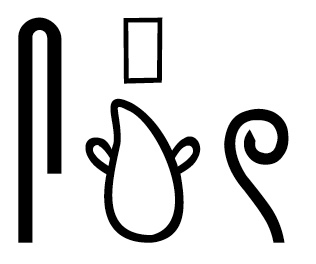 spj, âassembler (une embarcation)â »
spj, âassembler (une embarcation)â »
ENiM 11, 2018, p. 197-224.
 Le verbe spj est habituellement traduit ÂŦ attacher les parties dâun bateau en papyrus ou en bois Âŧ. Cependant, en raison du dÃĐterminatif trÃĻs particulier qui accompagne ce mot, le signe N32 de la liste de Gardiner, qui figure une masse dâexcrÃĐments ou dâargile, certains chercheurs on fait dÃĐriver le sens de ce mot dâun sens primitif signifiant ÂŦ calfater Âŧ. Or, le calfatage est un technique apparaissant tardivement dans la construction des bateaux en bois. Ce signe figure en fait un mÃĐlange dâargile et de dÃĐjections de bovidÃĐs servant à colmater les parties faibles dâune coque en bois.
Le verbe spj est habituellement traduit ÂŦ attacher les parties dâun bateau en papyrus ou en bois Âŧ. Cependant, en raison du dÃĐterminatif trÃĻs particulier qui accompagne ce mot, le signe N32 de la liste de Gardiner, qui figure une masse dâexcrÃĐments ou dâargile, certains chercheurs on fait dÃĐriver le sens de ce mot dâun sens primitif signifiant ÂŦ calfater Âŧ. Or, le calfatage est un technique apparaissant tardivement dans la construction des bateaux en bois. Ce signe figure en fait un mÃĐlange dâargile et de dÃĐjections de bovidÃĐs servant à colmater les parties faibles dâune coque en bois.
 The verb spj is usually translated as ÂŦ to tie the parts of a boat in papyrus or wood Âŧ. However, because of the very particular determinative that accompanies this word, the N32 sign of Gardinerâs list, which is a mass of excrement or clay, some researchers have derived the meaning of this word from a primitive signification meaning ÂŦ caulk Âŧ. However, caulking is a technique that appears late in the construction of wooden boats. This sign is a mixture of clay and dung of cattle used to seal the weak parts of a wooden hull.
The verb spj is usually translated as ÂŦ to tie the parts of a boat in papyrus or wood Âŧ. However, because of the very particular determinative that accompanies this word, the N32 sign of Gardinerâs list, which is a mass of excrement or clay, some researchers have derived the meaning of this word from a primitive signification meaning ÂŦ caulk Âŧ. However, caulking is a technique that appears late in the construction of wooden boats. This sign is a mixture of clay and dung of cattle used to seal the weak parts of a wooden hull.
 Consulter cet article (29909) -
Consulter cet article (29909) -  Télécharger cet article au format pdf (18757)
Télécharger cet article au format pdf (18757)
« Les citernes de la mer Rouge et le voyage au pays de Pount »
ENiM 11, 2018, p. 135-170.
 Analyse du problÃĻme de la difficile gestion des stocks dâeau douce lors des expÃĐditions en mer Rouge vers le pays de Pount.
Analyse du problÃĻme de la difficile gestion des stocks dâeau douce lors des expÃĐditions en mer Rouge vers le pays de Pount.
 Analysis of the problem of the difficult management of freshwater stocks during shipments in the Red Sea to the country of Punt.
Analysis of the problem of the difficult management of freshwater stocks during shipments in the Red Sea to the country of Punt.
 Consulter cet article (32988) -
Consulter cet article (32988) -  Télécharger cet article au format pdf (19176)
Télécharger cet article au format pdf (19176)
« Les pays des arbres à myrrhe et des pins parasols. à propos de Tȝ-nṯr »
ENiM 12, 2019, p. 87-122.
 Les tentatives de localisation du ÂŦ Pays du dieu Âŧ ont toujours ÃĐtÃĐ infructueuses. Un examen attentif de la documentation relative à ce toponyme montre quâil a toujours dÃĐsignÃĐ le sud-est de la pÃĐninsule arabique oÃđ poussent les arbres à aromates. à partir du Nouvel Empire un nouveau ÂŦ Pays du dieu Âŧ apparaÃŪt dans la documentation pour dÃĐsigner la rÃĐgion oÃđ pousse le pin parasol.
Les tentatives de localisation du ÂŦ Pays du dieu Âŧ ont toujours ÃĐtÃĐ infructueuses. Un examen attentif de la documentation relative à ce toponyme montre quâil a toujours dÃĐsignÃĐ le sud-est de la pÃĐninsule arabique oÃđ poussent les arbres à aromates. à partir du Nouvel Empire un nouveau ÂŦ Pays du dieu Âŧ apparaÃŪt dans la documentation pour dÃĐsigner la rÃĐgion oÃđ pousse le pin parasol.
 Attempts to locate the âGodâs landâ have always been unsuccessful. A careful examination of the documentation relating to this noun shows that it has always designated the southeastern part of the Arabian Peninsula where the aromatic trees grow. From the New Kingdom a new âGodâs Landâ appears in the documentation to designate the area where the umbrella pine grows.
Attempts to locate the âGodâs landâ have always been unsuccessful. A careful examination of the documentation relating to this noun shows that it has always designated the southeastern part of the Arabian Peninsula where the aromatic trees grow. From the New Kingdom a new âGodâs Landâ appears in the documentation to designate the area where the umbrella pine grows.
 Consulter cet article (30298) -
Consulter cet article (30298) -  Télécharger cet article au format pdf (17585)
Télécharger cet article au format pdf (17585)
« Ã propos de quelques termes nautiques ÃĐgyptiens de lâAncien Empire »
ENiM 14, 2021, p. 189-227.
 Ãtude des quelques termes du vocabulaire nautique de lâAncien Empire.
Ãtude des quelques termes du vocabulaire nautique de lâAncien Empire.
 Study of some terms of the nautical vocabulary of the Old Kingdom.
Study of some terms of the nautical vocabulary of the Old Kingdom.
 Consulter cet article (29715) -
Consulter cet article (29715) -  Télécharger cet article au format pdf (15119)
Télécharger cet article au format pdf (15119)
« Les voiliers de MÃĐrÃĐrouka »
ENiM 14, 2021, p. 229-248.
 Ãtude du grÃĐement et des coques des bateaux reprÃĐsentÃĐs dans la tombe de MÃĐrÃĐrouka (VIe dynastie, SaqqÃĒra). Identification du type de bateau et analyse lexicographique du terme Haw.
Ãtude du grÃĐement et des coques des bateaux reprÃĐsentÃĐs dans la tombe de MÃĐrÃĐrouka (VIe dynastie, SaqqÃĒra). Identification du type de bateau et analyse lexicographique du terme Haw.
 Study of the rigging and hulls of the boats represented in the tomb of Mereruka (VIth dynasty, Saqqara). Identification of the type of boat and lexicographic analysis of the word Haw.
Study of the rigging and hulls of the boats represented in the tomb of Mereruka (VIth dynasty, Saqqara). Identification of the type of boat and lexicographic analysis of the word Haw.
 Consulter cet article (30957) -
Consulter cet article (30957) -  Télécharger cet article au format pdf (14509)
Télécharger cet article au format pdf (14509)
« RÃĐflexions à propos des termes nautiques ÃĐgyptiens 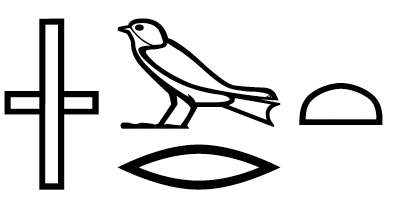 (jm(y)-wr.t), ÂŦ tribord Âŧ, et
(jm(y)-wr.t), ÂŦ tribord Âŧ, et 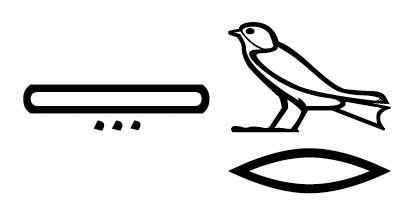 (tČ-wr), ÂŦ bÃĒbord Âŧ »
(tČ-wr), ÂŦ bÃĒbord Âŧ »
ENiM 15, 2022, p. 123-138.
 Ãtude de lâÃĐtymologie des termes ÃĐgyptiens jm(y)-wr.t et tA-wr. Ces deux mots signifient tribord et bÃĒbord en contexte nautique, et droite et gauche en contexte non nautique. Les traductions ÂŦ ouest Âŧ et ÂŦ est Âŧ doivent Être rÃĐservÃĐes pour jmn.t et jAb.t. Lorsque lâobservateur regarde vers le sud, il y a dans ce cas â et dans ce cas seulement â correspondance, mais non synonymie, entre jm(y)-wr.t et jmn.t dâune part et tA-wr et jAb.t dâautre part.
Ãtude de lâÃĐtymologie des termes ÃĐgyptiens jm(y)-wr.t et tA-wr. Ces deux mots signifient tribord et bÃĒbord en contexte nautique, et droite et gauche en contexte non nautique. Les traductions ÂŦ ouest Âŧ et ÂŦ est Âŧ doivent Être rÃĐservÃĐes pour jmn.t et jAb.t. Lorsque lâobservateur regarde vers le sud, il y a dans ce cas â et dans ce cas seulement â correspondance, mais non synonymie, entre jm(y)-wr.t et jmn.t dâune part et tA-wr et jAb.t dâautre part.
 Study of the etymology of the Egyptian terms jm(y)-wr.t and tA-wr. These two words mean starboard and port in a nautical context, and right and left in a non-nautical context. The translations west and east should be reserved for jmn.t and jAb.t. When the observer looks south, there is in this case â and in this case only â correspondence, but not synonymy, between jm(y)-wr.t and jmn.t on the one hand and tA-wr and jAb.t on the other.
Study of the etymology of the Egyptian terms jm(y)-wr.t and tA-wr. These two words mean starboard and port in a nautical context, and right and left in a non-nautical context. The translations west and east should be reserved for jmn.t and jAb.t. When the observer looks south, there is in this case â and in this case only â correspondence, but not synonymy, between jm(y)-wr.t and jmn.t on the one hand and tA-wr and jAb.t on the other.
 Consulter cet article (18741) -
Consulter cet article (18741) -  Télécharger cet article au format pdf (9309)
Télécharger cet article au format pdf (9309)
« OÃđ les reliefs dâHatchepsout à Deir el-Bahari situent-ils le pays de Pount ? »
ENiM 15, 2022, p. 139-179.
 Ce travail examine lâorganisation des scÃĻnes pountites dâHatchepsout à Deir el-Bahari, à partir de trois hypothÃĻses de localisation de Pount : cÃīte arabique de la mer Rouge, cÃīte africaine et Soudan nilotique. Seule lâhypothÃĻse arabique permet de reconstituer la logique de ce programme dÃĐcoratif et de mettre en relief sa simplicitÃĐ, sa logique et sa grande cohÃĐrence.
Ce travail examine lâorganisation des scÃĻnes pountites dâHatchepsout à Deir el-Bahari, à partir de trois hypothÃĻses de localisation de Pount : cÃīte arabique de la mer Rouge, cÃīte africaine et Soudan nilotique. Seule lâhypothÃĻse arabique permet de reconstituer la logique de ce programme dÃĐcoratif et de mettre en relief sa simplicitÃĐ, sa logique et sa grande cohÃĐrence.
 This work examines the organization of Hatshepsutâs puntite scenes at Dayr al-Bahri, based on three hypotheses for the location of Punt: the Arabian coast of the Red Sea, the African coast and the Nilotic Sudan. Only the Arabian hypothesis makes it possible to reconstruct the logic of this decorative programme and to highlight its simplicity, its logic and its great coherence.
This work examines the organization of Hatshepsutâs puntite scenes at Dayr al-Bahri, based on three hypotheses for the location of Punt: the Arabian coast of the Red Sea, the African coast and the Nilotic Sudan. Only the Arabian hypothesis makes it possible to reconstruct the logic of this decorative programme and to highlight its simplicity, its logic and its great coherence.
 Consulter cet article (19098) -
Consulter cet article (19098) -  Télécharger cet article au format pdf (9330)
Télécharger cet article au format pdf (9330)
« Ã propos de deux mots du lexique des bateliers ÃĐgyptiens. Le verbe ÅĄbw ou ÅĄbwj, âferlerâ (une voile), et lâhypothÃĐtique substantif áļĨtp, âvoileâ »
ENiM 15, 2022, p. 335-353.
 Ãtude lexicographique du verbe ÅĄbw ou ÅĄbwj, ÂŦ ferler Âŧ (une voile), et de lâhypothÃĐtique substantif ?tp, ÂŦ voile Âŧ.
Ãtude lexicographique du verbe ÅĄbw ou ÅĄbwj, ÂŦ ferler Âŧ (une voile), et de lâhypothÃĐtique substantif ?tp, ÂŦ voile Âŧ.
 Lexicographical study of the verb ÅĄbw or ÅĄbwj, âto furlâ (a sail), and of the hypothetical noun ?tp, âsailâ.
Lexicographical study of the verb ÅĄbw or ÅĄbwj, âto furlâ (a sail), and of the hypothetical noun ?tp, âsailâ.
 Consulter cet article (23293) -
Consulter cet article (23293) -  Télécharger cet article au format pdf (8227)
Télécharger cet article au format pdf (8227)
« Navigation ÃĐgyptienne 1. Les mots tČw.t / tČy.t, áđŊČw.t et áļĨtČw, ÂŦ voile Âŧ (dâun bateau) »
ENiM 17, 2024, p. 171-181.
 Analyse lexicographique des mots tAw.t / tAy.t, TAw.t et HtAw, ÂŦ voile Âŧ (dâun bateau).
Analyse lexicographique des mots tAw.t / tAy.t, TAw.t et HtAw, ÂŦ voile Âŧ (dâun bateau).
 Lexicographic analysis of the words tAw.t / tAy.t, TAw.t and HtAw, âsailâ (of a boat).
Lexicographic analysis of the words tAw.t / tAy.t, TAw.t and HtAw, âsailâ (of a boat).
 Consulter cet article (9936) -
Consulter cet article (9936) -  Télécharger cet article au format pdf (3909)
Télécharger cet article au format pdf (3909)
« Navigation ÃĐgyptienne 2. Les mots áļŦft-áļĨr, ÂŦ ÃĐtai Âŧ, áļĨČ-áđŊČw, ÂŦ pataras Âŧ, et nfw, ÂŦ hauban Âŧ »
ENiM 17, 2024, p. 183-200.
 Analyse lexicographique des mots xft-Hr, ÂŦ ÃĐtai Âŧ, HA-TAw, ÂŦ pataras Âŧ, et nfw, ÂŦ hauban Âŧ.
Analyse lexicographique des mots xft-Hr, ÂŦ ÃĐtai Âŧ, HA-TAw, ÂŦ pataras Âŧ, et nfw, ÂŦ hauban Âŧ.
 Lexicographic analysis of the words xft-Hr, ÂŦ forestay Âŧ, HA-TAw, ÂŦ backstay Âŧ, and nfw, ÂŦ shroud Âŧ.
Lexicographic analysis of the words xft-Hr, ÂŦ forestay Âŧ, HA-TAw, ÂŦ backstay Âŧ, and nfw, ÂŦ shroud Âŧ.
 Consulter cet article (10225) -
Consulter cet article (10225) -  Télécharger cet article au format pdf (3791)
Télécharger cet article au format pdf (3791)
 Analyse lexicographique des mots xt-TAw, ÂŦ mÃĒt Âŧ (dotÃĐ de tous les ÃĐlÃĐments du grÃĐement), xt ÂŦ mÃĒt Âŧ (dotÃĐ uniquement des manÅuvres dormantes), jbw, ÂŦ drisse Âŧ, et TAw, ÂŦ voile Âŧ (dotÃĐe de ses vergues et des manÅuvres courantes).
Analyse lexicographique des mots xt-TAw, ÂŦ mÃĒt Âŧ (dotÃĐ de tous les ÃĐlÃĐments du grÃĐement), xt ÂŦ mÃĒt Âŧ (dotÃĐ uniquement des manÅuvres dormantes), jbw, ÂŦ drisse Âŧ, et TAw, ÂŦ voile Âŧ (dotÃĐe de ses vergues et des manÅuvres courantes).
 Lexicographic analysis of the words xt-TAw, âmastâ (with all the rigging elements), xt âmastâ (only with standing riggings), jbw, âhalyardâ, and TAw, âsailâ (with its yards and running riggings).
Lexicographic analysis of the words xt-TAw, âmastâ (with all the rigging elements), xt âmastâ (only with standing riggings), jbw, âhalyardâ, and TAw, âsailâ (with its yards and running riggings).
 Consulter cet article (9609) -
Consulter cet article (9609) -  Télécharger cet article au format pdf (3732)
Télécharger cet article au format pdf (3732)
« Navigation ÃĐgyptienne 4
Le mot  , ÅĄnnw.w / ÅĄnn.w, ÂŦ manoeuvres dormantes Âŧ »
, ÅĄnnw.w / ÅĄnn.w, ÂŦ manoeuvres dormantes Âŧ »
ENiM 17, 2024, p. 215-219.
 Analyse lexicographique du mot Snnw.w / Snn.w, ÂŦ manÅuvres dormantes Âŧ.
Analyse lexicographique du mot Snnw.w / Snn.w, ÂŦ manÅuvres dormantes Âŧ.
 Lexicographic analysis of the word Snnw.w / Snn.w, âstanding riggingsâ.
Lexicographic analysis of the word Snnw.w / Snn.w, âstanding riggingsâ.
 Consulter cet article (9737) -
Consulter cet article (9737) -  Télécharger cet article au format pdf (3736)
Télécharger cet article au format pdf (3736)
« Navigation ÃĐgyptienne 5. Ã propos du terme nautique sÅĄd, âcÃĒbleâ, âaussiÃĻreâ, Ã supprimer »
ENiM 17, 2024, p. 291-294.
 Ãtude du mot sÅĄd, ÂŦ cÃĒble Âŧ, ÂŦ aussiÃĻre Âŧ, Ã supprimer du vocabulaire nautique.
Ãtude du mot sÅĄd, ÂŦ cÃĒble Âŧ, ÂŦ aussiÃĻre Âŧ, Ã supprimer du vocabulaire nautique.
 Study of the word sÅĄd, âropeâ, âhawserâ, to be removed from nautical vocabulary.
Study of the word sÅĄd, âropeâ, âhawserâ, to be removed from nautical vocabulary.
 Consulter cet article (229) -
Consulter cet article (229) -  Télécharger cet article au format pdf (55)
Télécharger cet article au format pdf (55)
ENiM 15 - 2022
18 article(s) - 29 octobre 2024.
ENiM 1 à 17 (2008-2024) : 219 articles
3 622 309 téléchargements
6 460 967 consulations.
Index des auteurs

Mots clés

Derniers articles : 
TDENiM - Mise en ligne des volumes ÃĐpuisÃĐs : 
CENiM - Mise en ligne des volumes ÃĐpuisÃĐs : 
 Jean-Claude Grenier L'Osiris ANTINOOS, CENiM 1, Montpellier, 2008 — (26 dÃĐcembre 2008)
Jean-Claude Grenier L'Osiris ANTINOOS, CENiM 1, Montpellier, 2008 — (26 dÃĐcembre 2008) 
 Twitter
Twitter 3397779 visites - 2980 visite(s) aujourd’hui - 185 connecté(s)
© ENiM - Une revue d’égyptologie sur internet
Équipe Égypte Nilotique et Méditerranéenne - UMR 5140 - « Archéologie des Sociétés Méditerranéennes » (Cnrs) - Université Paul Valéry - Montpellier III
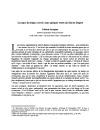
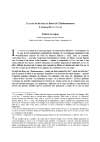
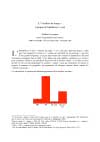
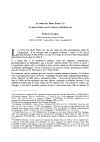
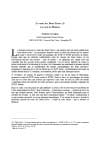
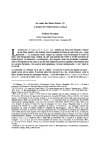
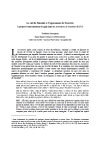
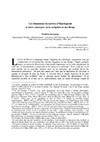
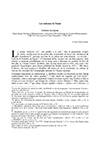
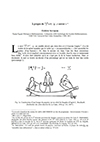
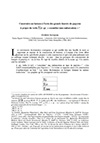
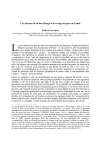
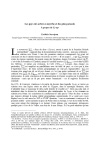
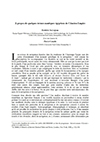
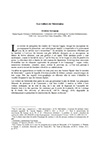
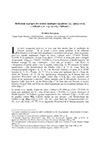
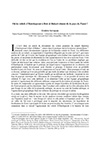
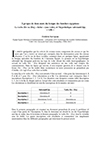
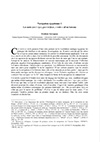
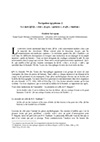
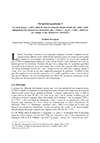
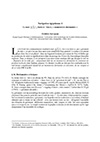
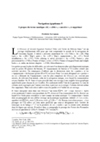







 Contact
Contact
 Abonnez-vous !
Abonnez-vous ! Équipe Égypte Nilotique et Méditerranéenne
Équipe Égypte Nilotique et Méditerranéenne UMR 5140 « Archéologie des Sociétés Méditerranéennes » (Cnrs)
UMR 5140 « Archéologie des Sociétés Méditerranéennes » (Cnrs) Université Paul Valéry - Montpellier III
Université Paul Valéry - Montpellier III